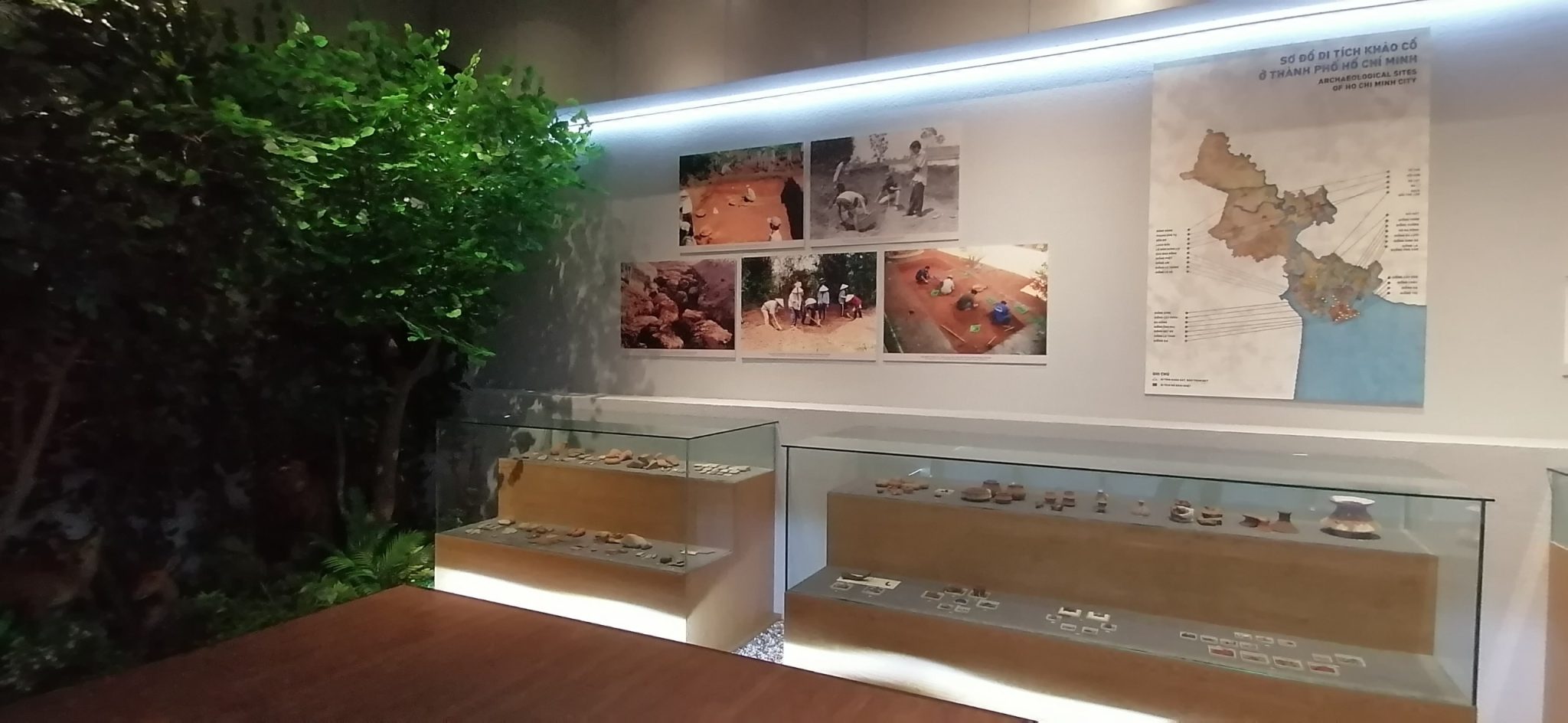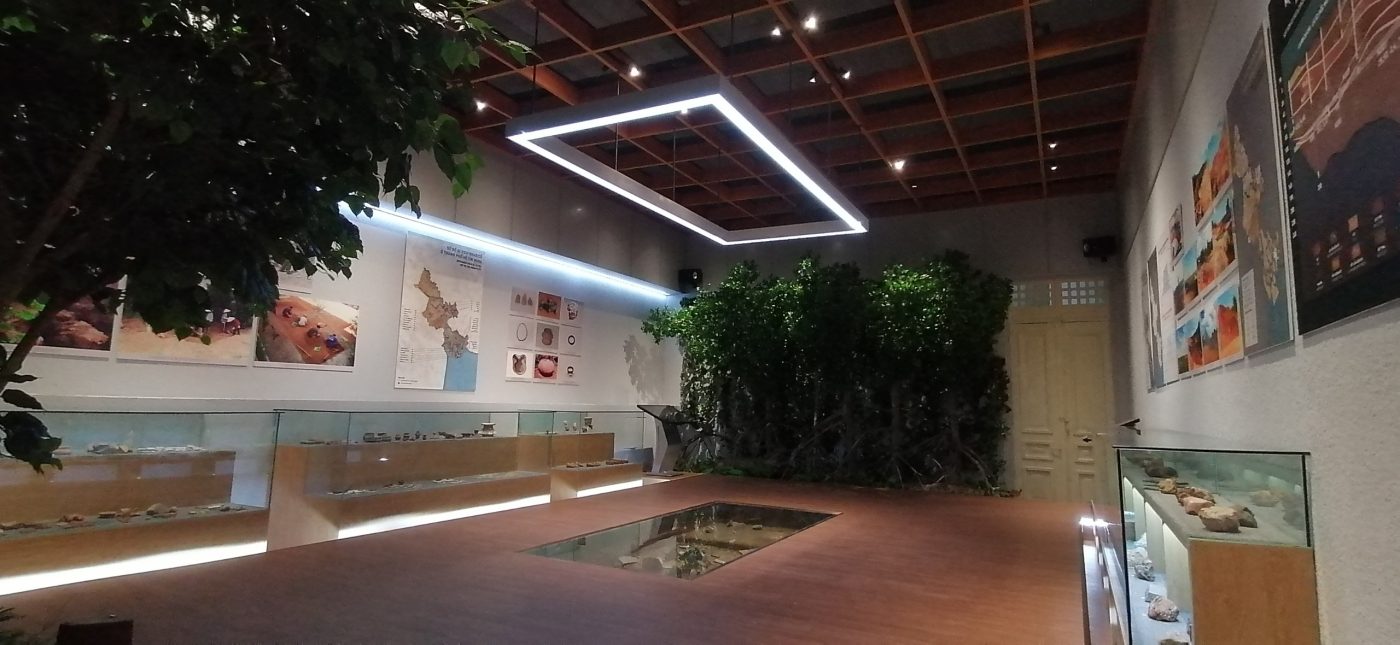The room of Ho Chi Minh City’s Nature and Archaeology exhibits two main contents: nature and archeology. Through various images, artifacts, maps, and diagrams, the basic features of the geological structure, topography, climate, rivers, animals, plants, and mineral resources were introduced. Additionally, there are also archaeological sites that prove this land was inhabited 3,500 years ago.
Nature:
Climate: Ho Chi Minh City has a sub-equatorial tropical monsoon climate, with high temperatures throughout the year and two distinct seasons: the rainy season (from May to November) and the dry season (from December to April next year). The temperature ranges from 13.8 degrees Celsius (lowest) to 40 degrees Celsius (highest), with 27 degrees Celsius serving as the average temperature. The average rainfall is 1,949mm per year.
Topography: The city’s terrain, which is situated in a transitional area between the Southeast region and the Mekong River Delta, gradually flattens out from North to South and from West to East. There are three main types of terrain: hilly terrain (Long Binh – Thu Duc area), plain terrain (inner city area, Hoc Mon, Cu Chi), and salt-marsh terrain (Can Gio area).
Geology: Ho Chi Minh City was created 150 – 152 million years ago, consisting of five systems and five layers made up of rock strata of different compositions, origins, and ages: Andesite, shale, precipitated sandstone, clay of the Long Formation (152-135 million years ago), clay of the Ba Mieu Formation (2.3-1.6 million years ago), gravel, laterite, grit Lateritized gravel belongs to the Thu Formation (0.73 – 0.127 million years ago), the gray sandy clay of the Cu Chi Formation (0.127 – 0.07 million years ago), powder clay, gray powder clay of the Binh Formation (more than 6000 years ago), mixed clay, peat of Can Gio Formation (less than 6000 years ago).
Minerals: Ho Chi Minh City has quite a variety and wealth of minerals, including 179 mines and ore points, the majority of which are non-metallic. Specifically, there are 31 large mines, 24 medium mines, 61 small mines, while the rest are ore points.
River system: Ho Chi Minh City is located between two large rivers, Saigon River and Dong Nai River, along with a system of rivers and canals with a density of 3,38km/km2, such as Nha Be River, Long Tau river, Lo Ren river, Go Dua canal, Ong Lon canal, Go Noi canal, Lang The canal, Ben Nghe canal,… With an average flow of 500m³/s annually, the river system provides 15 billion m³ of water. Additionally, thanks to the layer of sediments, the area north of Ho Chi Minh City also has a rich amount of groundwater.
Maps of flora and fauna ecological systems: Based on the favorable terrain and climate, the flora and fauna ecological systems here are rich and diverse, with tigers, monkeys, crocodiles, oil plants, and many other precious kinds of wood such as tracwood, ebony, etc.

Archaeology
The map introduces 46 archaeological sites and archaeological remains in Ho Chi Minh City, along with some pictures of archaeological site excavations by the Museum of Ho Chi Minh City in collaboration with other museums, such as Ben Do relic, Long Buu relic (District 9), Giong Ca Vo relic, Giong Phet relic, Giong Am relic (Can Gio), Hung Loi Pottery relic (District 8), Rong Bang relic (Hoc Mon), Bao Dong relic (Can Gio).

The gallery introduces several artifacts, such as tools and some jewelry made from many different materials, showing that the crafting techniques of the residents here have reached a high level. Additionally, it also proved that this place used to be the factory of the ancient Vietnamese.
The gallery also introduces the burial of jars discovered at the archaeological site of Giong Ca Vo (Can Gio). The jars are handmade, the clay is mixed with porous sand, not enameled, the product is lightly baked, showing the belief concept of the ancient residents here that is the worship of the souls of the dead, the symbolism of the dead. shows the close relationship between the living and the dead. At the same time, the study of ancient burial customs also contributed to clarifying many economic, cultural, and social issues at that time.
Through the display content, the room helps viewers better visualize the nature and archeology of the land in the context of prehistoric culture 3,500 years ago, as well as the ongoing process of reclamation and establishment of Saigon – Gia Dinh residents.


